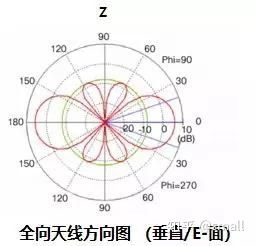Antenna is a passive device, mainly affects the OTA power and sensitivity, coverage and distance, and OTA is an important means to analyze and solve the throughput problem, usually we mainly for the following parameters (the following parameters do not consider the laboratory error, the actual antenna design performance will also affect the throughput performance):
a) VSWR
Measure the reflection degree of the input signals at the antenna feed point. This value does not mean that the antenna performance is good, but the value is not good, it means that the energy input to the antenna feed point is reflected more, compared with the good standing wave antenna, the power that can be used for radiation has been reduced more.
b) productiveness
The ratio of the power radiated by the antenna to the power input to the feed point of the antenna will directly affect the Wi-Fi OTA power (TRP) and sensitivity (TIS) performance.
c) gain
It represents the power ratio of a location in the spatial direction to the ideal point source antenna here, while the passive data of OTA is usually the maximum gain of a single frequency (channel) in the sphere, mainly related to the transmission distance.
d) TRP/TIS
These two comprehensive indicators are obtained by integrating the whole radiation sphere of free space (which can be understood as OTA laboratory environment), which can intuitively reflect the Wi-Fi performance of the product (PCBA hardware + OTA performance of mold + antenna).
When TRP / TIS test is different from expected, pay attention to whether Wi-Fi enters low power mode and battery powered products; TRP needs to focus on ACK and non-ACK mode, and TIS has always been the key point in OTA, after all, transmission can only reflect some interference, software factors will also affect TIS.
TRP / TIS can be used as an important means for the analysis of Wi-Fi throughput.
e) directional diagram
It is used to qualitatively assess the radiation coverage of the product in space, and the test data is usually distinguished according to the frequency (channel), each frequency has three faces: H, E1 and E2, so as to characterize the signal coverage of the entire sphere of the antenna. When the Wi-Fi product is actually used at a long distance (when the orientation chart cannot be characterized at a close distance), the wireless signal coverage of the product is actually verified by testing the throughput from multiple angles.
f) insulation
Isolation degree measures the isolation degree of Wi-Fi multi-channel antenna and the mutual coupling between antennas. A good isolation degree can reduce the mutual coupling between antennas and have a good direction map, so that the whole machine has a good wireless signal coverage.







